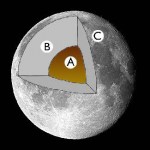giant
"Now, this is not the end. It is not even the beginning of the end. But it is, perhaps, the end of the beginning." -Winston Churchill
To kick off every week for nearly a year now, we've begun it with Messier Monday, where we take an in-depth look at the 110 deep-sky objects that make up the first elaborate catalogue of fixed night-sky wonders that could possibly be confused for transient comets. Originally, when first published, this catalogue was made up of 103 objects; the final 7 were added posthumously. Each one tells its own unique story, yet all of them tell a sliver of our own…
"Man alone is born crying, lives complaining, and dies disappointed." -Samuel Johnson
But the stars, as opposed to humans, are born shining, with hundreds (or more) of brothers and sisters, shine ever more brightly over their lifetimes, and die in spectacular fashion. As far as we can tell, here's the past, present and future story of all the Sun-like stars in our galaxy.
Bok Globule Barnard 175; image credit by Jerry Lodriguss of http://www.astropix.com/.
At some point in the far distant past, every star in our galaxy was once no more than a molecular cloud of gas, with gravity attempting…
"It suddenly struck me that that tiny pea, pretty and blue, was the Earth. I put up my thumb and shut one eye, and my thumb blotted out the planet Earth. I didn't feel like a giant. I felt very, very small." -Neil Armstrong
Here on our little wet rock in our Solar System, we often remind ourselves what a small world Earth actually is. The farther out in space we reach, the more this appears to be true.
Image credit: NASA / Apollo 11, taken by Command module pilot Michael Collins.
The Earth is the largest of the four inner, rocky planets in our Solar System, at more than 12,000 km in…
Megarachne, (changed to Mesothelae for broadcast) restored as an enormous spider in the series Before the Dinosaurs: Walking With Monsters.
Imagine that you are are standing in a massive junkyard with the remains of cars strewn all about you. A few are relatively complete, but most of the heap is made up of bits and pieces of models from the entire history of automotive innovation. If you were to reach down and pick up one of the scraps, would you be able to tell the make and model of the car it came from?
The challenges a paleontologist faces in reconstructing the life of the past are…
But I didn't want one! Stop your whining, Earthlings. We have a serious question to answer, courtesy of Tamara:
What’s the moon like below its surface, moving into the interior? And what’s the current thought on its formation?
Well, we do know a lot about the Moon's insides the same way we know about the Earth's; just like the Earth has earthquakes, the Moon has moonquakes. These tell us about the Moon's interior. From back when we landed on the Moon, we planted the Apollo seismic experiments and saw 28 moonquakes. From these, we learned that the Moon has a crust about 60 km deep, a deep…
Back in March of 2007, we brought you the story of an enormous (colossal really) squid, captured by New Zealandish fishermen and brought back for examination at the University of New Zealand. The frozen squid posed challenges for the researchers who realized that it would take so long to thaw that the outer parts would be rotting before the core had even melted (also an appropriate description of my brother Benny's heart).
Well the marine biologists made their move today, thawing out the colossal squid in a bath of cool water. Had the water been too hot, they were worried it might crack the…
What's going to happen to all the stars in the Universe as they get older? Well, just as nothing can live forever, stars can't live forever also. Why? Because they run on fuel: burning hydrogen into helium, for example. When they run out of fuel, something's gotta give. Barbara Ryden reminds us of an excellent and appropriate quote by Dylan Thomas:
Do not go gentle into that good night.
Rage, rage against the dying of the light.
But what exactly happens to the star depends very sensitively on what the mass of the star is.
If you've got a tiny little star, less than about 40% of the mass of…
Annette Edwards has a noble goal: to breed the world's biggest rabbit. It now appears that she has succeeded in her silly little dream of lagormorph gigantism with Amy. While most country folk are content with merely growing the world's largest pumpkin or zucchini, Annette has succeeded in creating a rabbit that could easily eat a child.
We agree, this picture is way too big.
Fully extended, Amy the rabbit is 4ft from nose to tail. Good lord. Although the inimitable news source that is the Daily Mail quotes three different weights for Amy, the heaviest is 3.5 stone or roughly, in American,…




